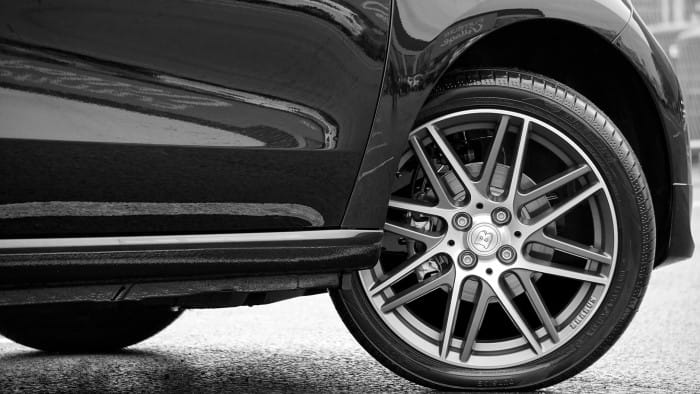
Tyres are an essential part of your car’s overall performance, and you’ll need to make sure that you can keep your tyres in the best possible condition. You will have to ensure that you don’t negatively impact your car’s performance in the long run. Any improvements that you do with your tyres will positively impact the performance of the car.
The best way to improve your tyres’ performance is for you to keep them in good condition.
Check Your Tyre Pressure
Using tyres with improper air pressure would lead to many different problems which include uneven and accelerated tire wear, structural damage, tire failure, and poor gas mileage.
The tyre pressure is essential for tyre performance, as the tyres perform best when they have the recommended tyre pressure. Having the recommended tyre pressure ensures that you have the optimal contact area between your tyre and the surface, which will give you the best performance while ensuring that your car remains secure. So checking your tyres’ pressure should be a regular task and can quickly be done when you stop and refuel at a petrol station. The tyre pressure will vary with temperature, so it is good to check also after big temperature swings.
It is more common to have low tyre pressure, which can damage the tyres’ sidewalls. It also causes the rolling resistance to increase. The higher rolling resistance will increase the heat build-up and will wear out the tyres prematurely.
The increased rolling resistance will cause the car to consume more fuel. So both these factors can add a lot of costs to your overall budget. It is essential to have your tires properly inflated so that you can improve your gas mileage while being able to save money in the long run. It is advisable to check your tire pressure monthly and before going on long trips.
Regularly Inspect Your Tyres
Simply using your tyres without checking on their condition frequently would potentially result in having worn out and damaged tyres. Constant use could result in your tyres having cracks or bulges, objects getting lodged inside tyres, punctures, and uneven tyre tread wear.
You’ll need to ensure that your tyres that are damaged through constant use would be repaired as soon as possible. It is much more advisable to take your damaged tyres to a mechanic to have it repaired properly.
Included in your inspection should be the wheel alignment of your car since there’s a chance that you’d hit potholes and railroad crossings that would knock your tyres out of alignment. More severe cases like car accidents would also knock your tyres out of alignment.
It’s advisable to get a wheel alignment every year or once you reach 25,000 km to avoid having tyres with uneven tread wear.
Use Premium Tyres
You should purchase a good set of premium tyres that have low rolling resistance and excellent overall driving properties. Premium tyres will last longer and consume less fuel while exhibiting a better safety profile. The carefully designed tread patterns will have been developed to show excellent properties for specific usage. This is why it is crucial to purchase the correct tyre for your intended use. This can depend on surface, loads, speed, and weather conditions.
Compromising on the quality of the tyre you’re purchasing won’t do you any good since they might be cheaper on the outset only to cost you significantly in the long run.
Use the Right Tyres
To achieve the best performance from the car, you will need to make sure that you use the right tyres for when you’ll use it. You need to buy summer tyres for summer use, winter tyres for winter use and possibly an all-weather tyre for all year round usage.
You will have better performance if you change tyres between summer and winter as the tyres have been better optimized for the more targeted usage. The all-weather tyres are also an excellent choice to ensure that you will at least have the minimum safety needed.
Using summer tyres during the winter and winter tyres during the summer would not only be damaging your tyres needlessly but also compromising your overall security.
Rotate Your Tyres
The best way to do it is that you use the all-weather tyres during spring and autumn. That way you’ll have three sets of tyres and change four times per year instead of two times. Your overall tyre wear and tyre costs wouldn’t be higher, but you would need to invest in three sets of tyres. That would improve overall performance and safety.
While it may seem to be cheaper and more cost-effective, you shouldn’t mix and match different sets of tyres when rotating your tyres since using mismatched tyres can lead to rapid and uneven wear on your tyres’ treads.
To prolong your tyres’ operational lives, you should only replace them when needed. Pay close attention to the tyre’s treads for indication on when to replace your tires.
You’ll have to replace your tyres regularly either every 10,000 to 12,000 km or six months to keep them from wearing out. You’ll also need to pay close attention to your tyre’s treads to have better information on whether you should replace your tires or not. If they’re starting to wear out, replace them.
Store Your Tyres Properly
Using tyres is one thing, and not using them is another. Simply replacing your tyres with another set without storing your old ones properly would result in your tyres’ rubber deteriorating when stored while having stains.
You must store your unused tyres indoors in a clean, cool, and dark location away from direct sunlight and any sources of heat. Storing tyres outdoors would need more measures since you’ll need to make sure that the tyres are raised off the ground and use waterproof coverings with holes to keep any moisture from building up.
